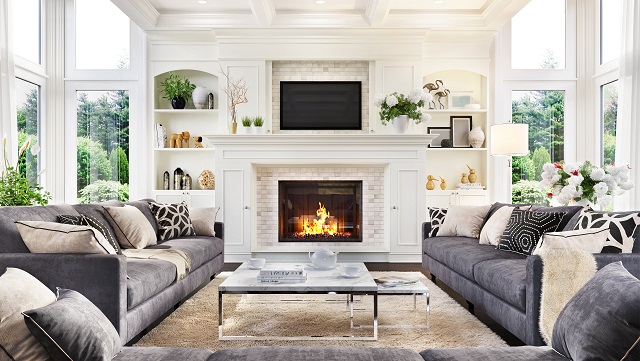4 basic principles of striking living room design
4 basic principles of striking living room design
The living room isn’t just a space where you and your family can relax at the end of the day and entertain guests at events; it’s also a room where you can showcase your and your loved ones’ personalities.
It is believed that over the past few months, when most of the world has been indoors, the importance of a dynamic living room layout has been recognized.

Photo: AdobeStock
If you’re thinking about designing an eye-catching living room space but don’t know how to use it, you’re in luck. The following guide helps you with this by outlining the basic principles you should know to create an eye-catching living room design.
The principle of scale and proportion
Scale refers to the relative size of an object in relation to the space or other item in which it resides. Conversely, scale refers to the size of one part in relation to another. These two principles are interrelated as they focus on the dimensions and connections between decorative items in the living room space. When placing items in the living room to ensure maximum use of available floor space, it is critical to pay attention to proportions and the principles of proportionality.
When choosing furniture for your living space, it is especially important to consider proportions and the principles of proportionality. For example, when you buy teak furniture, make sure it has the proper proportions and proportions to prevent it from appearing too big or too small in the room. Since scale and proportion have such a significant impact on making your living room look bigger or smaller, you shouldn’t overlook its importance.
2. The principle of harmony
The different spaces and objects throughout the living room must complement and work with each other to make it feel like a whole. As a result, this creates unity and removes any sense of instability that may exist in the living room. The Harmony principle essentially brings together all the other principles that, when done correctly, bring a sense of unity to an interior space.
Harmony in living room design applies to how colors, decor and furniture fit seamlessly with a particular aesthetic, mood, theme or style. This makes everything in your living room feel like they really are in the right place.
3. The principle of balance
This interior design principle aims to give your living room space a sense of balance by estimating or balancing the visual weight of objects. There are many ways to achieve balance, including patterns, colors, textures and shapes. Once the proper balance is achieved, your living space will have symmetry and equality.
Three different types of balances to follow when creating a living room design include:
- Formal or symmetrical: This is the most common type of balancing and involves placing objects and furniture fixtures directly opposite each other. This balance gives your living space a sense of calm and serenity, but it can feel boring and monotonous.
- informal or asymmetrical: This balanced form gives you greater creative freedom, which means that the visual weight of colour, texture, form and line is balanced but not replicated exactly. While its construction is less symmetrical than balanced, it is more pleasing to the eye.
- extreme: This type of balance is when the elements of the interior space originate from the central focal point. For example, chairs are arranged around the dining table. Radical balance can be characterised by texture, colour and repetition of form.
When looking for balance, the best place to start is to find a focal point in the living room space. This can be a fireplace, TV or large artwork.
4. Rhythm principle
The technique of creating flow in your living room design to allow your eyes to move freely in the interior space is called rhythm. Different ways to create rhythm in the living room of your home are:
- transition: It is often used as a strong line, furniture or architectural feature to create a continuous flow of objects throughout the space. Examples include dining tables, curtains, stair railings, and countertops.
- repeat: This essentially means echoing certain design elements in your living room space. The different design elements used include colour, form, light, line, texture, pattern and fabric. By repeating these design elements, the designer will give your interior space flow.
- progress: This point under the rhythm principle, when used in a certain way, adds a sense of depth. Different implementations include grading of shape, size, and color. A great example of a progressive element in a living room includes getting nested tables of different sizes.

Photo: AdobeStock
take away
You can only create a refreshing living room design by making sure to place it in the right place and observing the basic design elements. Knowing this as a regular homeowner might be too difficult to understand. This content feature is designed to ease your headaches by detailing the basic principles you need to know to create an eye-catching living room design.
Keep it up Artkraft
Discover more articles in our categories DIY Home & DIY Projects et Tips & Crafts .
Thanks for visiting we hope our article 4 basic principles of striking living room design
, we invite you to share the article on Facebook, instagram and e-mail with the hashtags ☑️ #basic #principles #striking #living #room #design ☑️!

